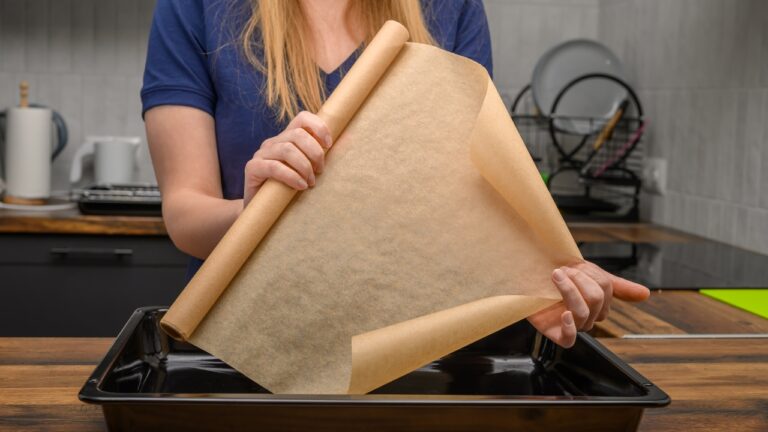10 Things You Should Never Store In Cardboard Boxes

We all have those cardboard boxes tucked away somewhere—in the attic, basement, or the back of a closet. Maybe it’s the box of winter sweaters you didn’t get around to unpacking last season, the sentimental keepsakes from Grandma, or the holiday decorations you promise to organize “next year.”
Cardboard feels like an easy solution, but here’s the problem: it’s not great for long-term storage. Pests, moisture, and time can turn those boxes into a disaster waiting to happen.
If you want to avoid ruined belongings and regret, here are 12 things you should never store in cardboard boxes—and what to use instead.
Holiday Decorations

Cardboard boxes seem like the go-to for holiday decor, but they don’t offer much protection. Glass ornaments can easily break, strings of lights can get tangled, and moisture or pests can leave a mess for next year.
What to use instead: Opt for plastic bins with dividers for delicate items and moisture-resistant containers for everything else. Label each bin clearly to make setup easier.
Vinyl Records

If you’re a vinyl lover, you know records need a little extra care. Heat can warp them, moisture leads to mold, and stacking them flat in cardboard boxes can cause long-term damage.
What to use instead: Store vinyl upright in dedicated record crates or bins designed for their size. Keep them in a temperature-controlled space away from humidity.
Chemicals and Hazardous Materials

Storing household chemicals like bleach, paint, or pesticides in cardboard boxes is not just inconvenient—it’s dangerous. Leaks can spill onto the box and weaken it, or worse, cause reactions with other stored items.
What to use instead: Keep chemicals on a dedicated shelf in a cool, ventilated area. Make sure bottles are sealed tightly and stored upright.
Firearms and Weapons

Firearms and other weapons need secure storage, not cardboard boxes. Not only can fluctuations in temperature cause rust, but a box offers no protection from curious kids or intruders.
What to use instead: Invest in a gun safe or locked cabinet to keep firearms secure and out of reach. Use moisture absorbers to prevent rust.
Clothing and Linens

Cardboard boxes might seem like an easy spot for winter sweaters or old bedding, but pests like moths and rodents love these cozy materials. Moths can chew right through wool, and rodents won’t think twice about turning your linens into their new nest. Plus, if moisture sneaks in, mold can spread and ruin fabrics before you even realize it.
What to use instead: Plastic bins with tight-sealing lids will keep your fabrics safe, dry, and pest-free. If you’re storing long-term, add cedar blocks or lavender sachets to naturally deter moths.
Important Documents

Family birth certificates, passports, and tax returns don’t belong in a cardboard box. Heat, humidity, and pests can warp, discolor, or completely destroy these crucial papers. Mice especially love shredding documents to build their nests.
What to use instead: Keep important papers in a fireproof, waterproof safe or lockable filing cabinet. For extra security, consider scanning documents and saving digital copies.
Photos and Books

Photos and books are delicate. Humidity can cause pages to curl and photos to stick together, while pests like silverfish or mice will make quick work of paper. And here’s a little-known fact: cardboard itself isn’t acid-free, which means it can cause your photos to yellow or degrade over time.
What to use instead: Use archival-quality, acid-free boxes or albums to keep your photos and books safe. Store them somewhere cool, dry, and away from direct sunlight.
Electronics

Humidity, dust, and fluctuating temperatures are a recipe for disaster when it comes to electronics. Cardboard offers no real protection, and over time, the box itself will weaken and collapse—possibly taking your devices with it.
What to use instead: If you still have the original box, use it. Otherwise, store electronics in plastic bins with cushioning like bubble wrap or anti-static foam for protection.
Valuables and Breakables

We’ve all had that dreaded moment when the bottom of a box gives out mid-carry. Cardboard weakens over time, especially with heavier items, making it a terrible choice for valuables, breakables, or anything sentimental.
What to use instead: Use sturdy plastic totes with reinforced bottoms. For glass or fragile items, wrap each piece in bubble wrap or soft cloth and stack them carefully.
Food Items

Whether it’s canned goods, cereal, or snacks, food should never be stored in cardboard boxes. Rodents and pantry pests can chew right through, and temperature swings can cause food to spoil or cans to rust. Spoiled food isn’t just wasteful—it’s a health hazard.
What to use instead: Use sealed plastic bins for extra protection, and always store food in a cool, dry place.






